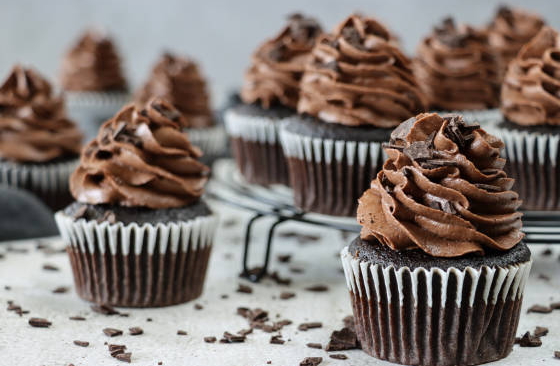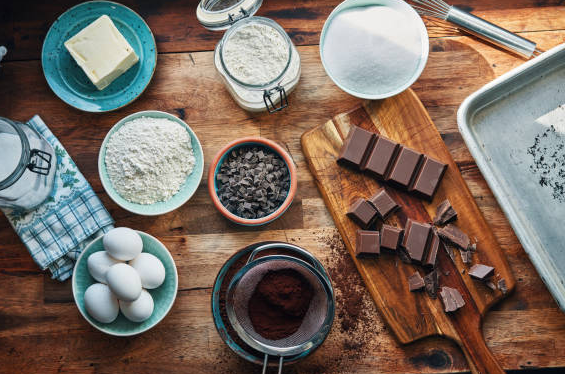If macarons are the royalty of French sweets, then chocolate desserts are the beloved “comfort and healing food” of the culinary world. Chocolate has a magical power to make people happy. No matter how it reveals itself on your palate, its soul-shaking sweetness can instantly heal your heart.Whether you’re a dessert connoisseur or a beginner, how much do you know about chocolate? Today, let’s share some tips on how to create a perfect chocolate dessert.
Chocolate Appreciation
First, we need to learn how to identify high-quality chocolate.
Appearance
Start by judging the appearance. Chocolate color can range from deep reddish-brown to dark brown. The look of the finished product depends on whether it was molded or hand-finished with a glaze. Molded chocolates are usually shiny; others might be a bit duller.
If the chocolate appears black, that indicates quality issues or over-roasting of the cocoa beans, which can affect the flavor.

Aroma
Open the package and take a deep breath. Notice the enticing chocolate aroma and check if it has the smell characteristic of high-quality chocolate.
Good chocolate should not have any artificial or chemical scent, nor should it smell like coconut or excessive sweetness. It also shouldn’t have a dusty odor, which might indicate it’s been stored too long or improperly and has gone bad.
Snap Test
Before tasting a piece of chocolate, break it in half and listen to the sound. Quality chocolate has a crisp, clean snapping sound due to the crystalline structure of cocoa butter. It shouldn’t produce碎片 or irregular sounds.
By observing the break, you can also see the thickness and layering of the chocolate—whether it’s double-layered or triple-layered.
Melt Test
You can also judge chocolate quality by hand. Hold it with your fingers; the temperature should be close to body temperature, which will cause the chocolate to melt.
Good chocolate will melt easily in your hand and emit a rich, tempting aroma.
Tasting
Place a small piece on your tongue and let it slowly melt. As it melts, move it around your mouth with your tongue, allowing the aroma and flavor to spread.
This process helps you fully appreciate the richness of the chocolate, as all tasting information is received through your mouth.
The Love Theory of Chocolate
Tempering Chocolate
Sometimes, we notice that when melted chocolate cools and solidifies again, it becomes soft and lacks shine, losing its previous glossy appearance. Its texture also worsens.
This is because the melting process wasn’t done correctly.
Tempering chocolate involves carefully melting it and then cooling it down in a way that restores its silky texture and glossy appearance, making it perfect for coating or shaping.
Common Phenomena in Chocolate Storage and Usage
Chocolate is a healthful snack that offers a full combination of color, aroma, and flavor. However, improper storage or repeated use can cause various changes in chocolate. To maintain the best quality, it’s important to understand and address these common issues.

The most frequent problems that occur with chocolate include:
Sugar Bloom
Sometimes, during production or after multiple uses, chocolate develops graininess that worsens over time. This graininess is caused by sugar crystallization, often called sugar bloom.
There are two main reasons for sugar bloom:
- Temperature: When melted chocolate is heated too high, the sugar content can turn into syrup. Continued heating leads to caramelization, which causes sugar bloom (graininess). Therefore, it’s crucial to melt chocolate at the proper temperature.
- Water: When water comes into contact with chocolate, the sugar dissolves into a syrup. If heated further, it can caramelize, creating graininess. In addition, water causes sugar to crystallize on the surface, resulting in sugar bloom.
When sugar bloom occurs, you should filter the chocolate through a fine sieve before using it. To preserve the flavor and texture, it’s best to replace affected chocolate to ensure your product remains rich, smooth, and of high quality.
Getting Thicker
Chocolate can become thickened due to two main reasons:
- Water: Similar to sugar bloom, water contact causes sugar to dissolve and form syrup, which thickens the chocolate and affects its texture. During production, avoid water contact as much as possible.
- Fat Loss: Over time, fats within the chocolate can slowly leach out, especially if they stick to work surfaces or tools. Repeated use can cause chocolate to become thick and less manageable. To restore it, you can add some cocoa butter to the thickened chocolate, blending well, which rebalances the consistency without compromising taste or workability.
Chocolate Bloom
Sometimes, a grayish-white layer appears on the surface of chocolate, known as chocolate bloom.
There are two types of bloom:
- Fat Bloom: Caused by cocoa butter migrating to the surface due to temperature fluctuations. When the environment is too warm, cocoa butter crystals rise to the surface and recrystallize upon cooling. This doesn’t usually affect taste, and gently warming the chocolate can fix the issue.
- Sugar Bloom: Caused by water contact. When water interacts with chocolate, sugar crystals dissolve and then recrystallize on the surface, forming a dull, grayish layer with a grainy texture. While still edible, sugar bloom makes the appearance less appealing and can diminish consumer preference.
By understanding these phenomena and how to prevent or address them, you can maintain high-quality, delicious chocolate products.